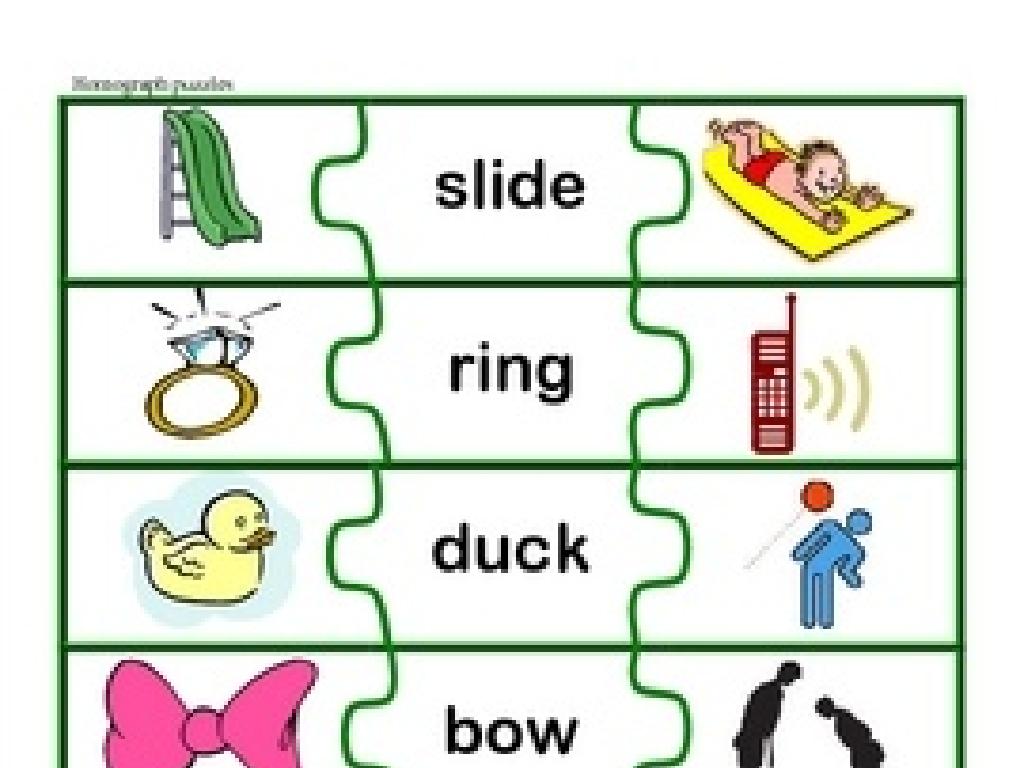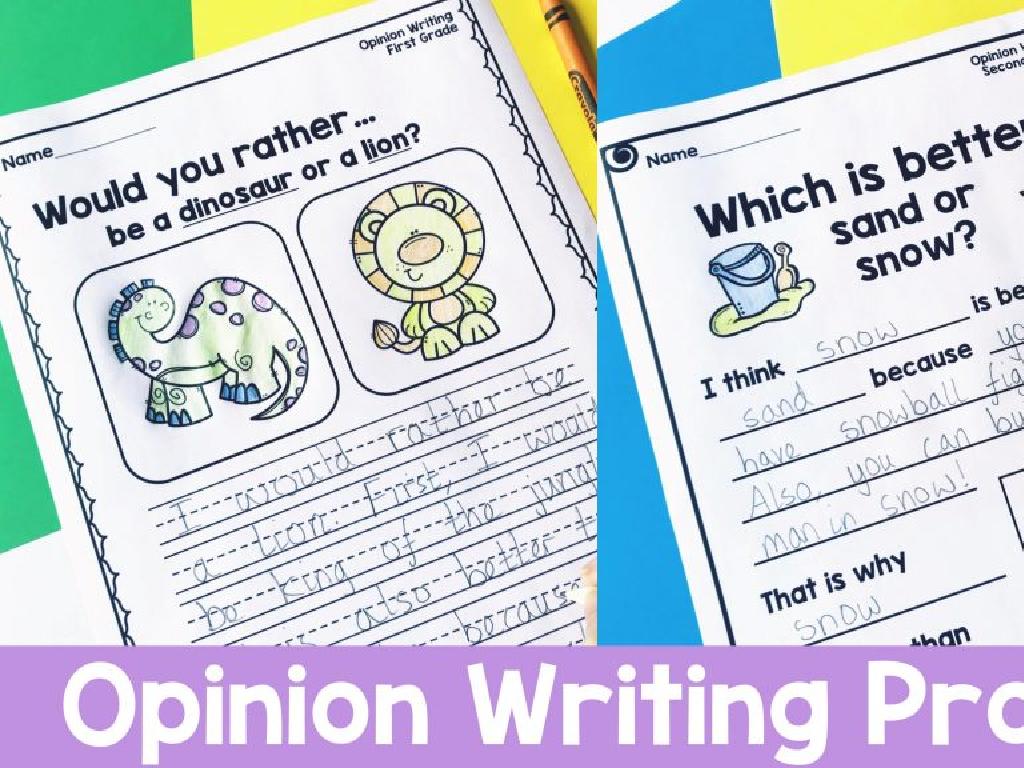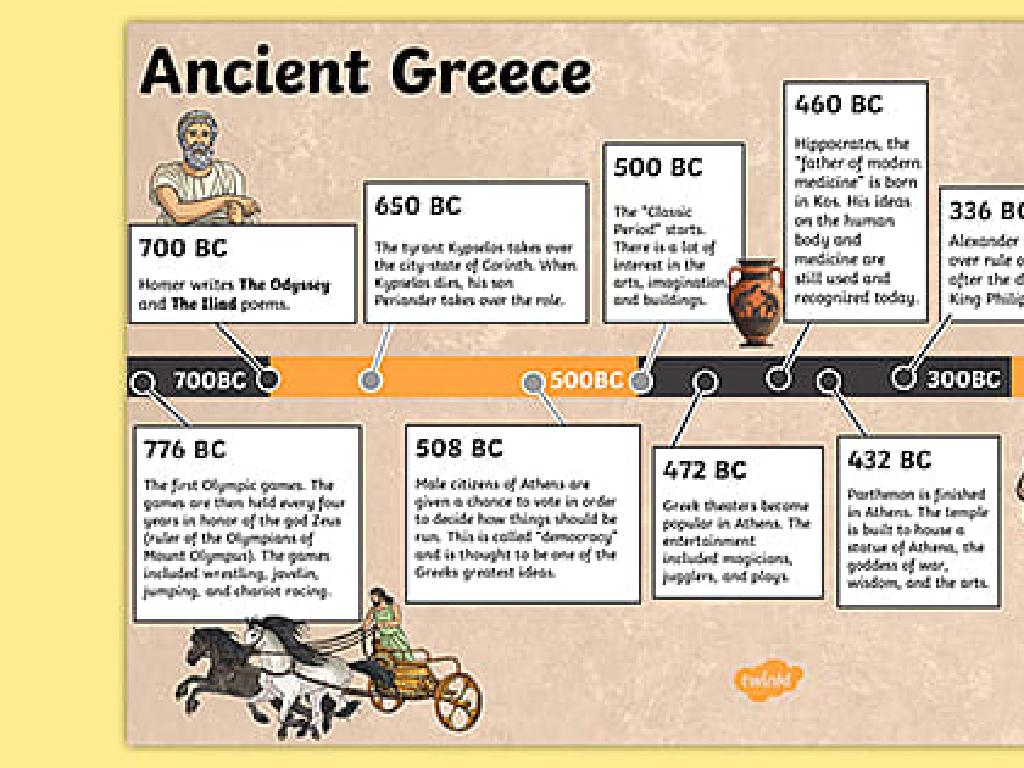Identify And Select Countries Of Africa: Region 3
Subject: Social studies
Grade: Sixth grade
Topic: Africa: Geography
Please LOG IN to download the presentation. Access is available to registered users only.
View More Content
Exploring Africa: Region 3
– Africa’s diverse geography
– Africa is vast with deserts, forests, and rivers.
– What are ‘regions’?
– ‘Regions’ are areas with common features.
– Focus on Region 3 countries
– We’ll learn about specific countries in Region 3.
– Why regions matter in geography
– Understanding regions helps us study geography.
|
This slide introduces students to the diverse geography of Africa and the concept of regions, which are areas that share common characteristics. Region 3 includes countries with unique features and histories that we will explore. Emphasize the importance of understanding regions to comprehend the continent’s geography better. Encourage students to think about the similarities and differences between regions. In the next class, we will delve into the specific countries that make up Africa’s Region 3, discussing their location, cultural significance, and geographical features.
Exploring Africa: Region 3
– Africa’s regional division
– Africa is often divided into regions for easier study and organization.
– Characteristics of Region 3
– Region 3 may include diverse climates, cultures, and languages.
– Countries within Region 3
– Examples: Nigeria, Cameroon, Gabon, Central African Republic
|
This slide aims to introduce students to the concept of dividing Africa into smaller regions for a more focused study. Region 3, as defined for this class, could include a specific set of countries that share geographical proximity and possibly other characteristics such as climate, cultural practices, or historical backgrounds. Provide a map to help students visualize the location of these countries. Discuss the importance of understanding the diversity within a single region and how it contributes to the continent’s overall richness. Encourage students to research more about each country’s unique features and prepare to discuss their findings in the next class.
Exploring Africa: Region 3’s Geography
– Major landforms of Region 3
– Explore mountains, valleys, and plains
– Rivers and lakes in Region 3
– Discover the Nile, Victoria, and other water bodies
– Region 3’s climate zones
– Learn about deserts, savannas, and rainforests
– Vegetation zones of Region 3
– Understand the areas of different plant life
|
This slide aims to introduce students to the diverse geography of Africa’s Region 3. Start by discussing the major landforms, such as the Ethiopian Highlands and the Great Rift Valley, to give students a sense of the region’s topography. Move on to the significant rivers and lakes, highlighting the Nile River and Lake Victoria, and discuss their importance to the local ecosystems and human populations. Discuss the various climate zones found in Region 3, from arid deserts to humid rainforests, and how these climates affect the vegetation zones. Encourage students to think about how the physical features of a region can influence the culture and daily life of its inhabitants.
Cultural Overview of Africa: Region 3
– Predominant languages in Region 3
– Swahili, Amharic, and other local dialects
– Region 3’s cultural practices
– Festivals, music, dance, and art forms
– Notable landmarks and sites
– Pyramids of Giza, Timbuktu, and Victoria Falls
– Understanding historical significance
– Learn how history shaped Region 3’s culture
|
This slide aims to give students a glimpse into the rich cultural tapestry of Africa’s Region 3. Start by discussing the variety of languages spoken, highlighting Swahili and Amharic as examples, and mention the existence of numerous local dialects. Move on to cultural practices, encouraging students to think about how traditions such as festivals and music are integral to cultural identity. Introduce famous landmarks like the Pyramids of Giza, the ancient city of Timbuktu, and the natural wonder of Victoria Falls, discussing their historical and cultural importance. Emphasize the value of understanding the historical context to fully appreciate the depth of the region’s culture. This will prepare students for a more in-depth exploration of the region’s geography and history in subsequent lessons.
Economic Activities in Africa: Region 3
– Agriculture, industry, and services
– Farming, manufacturing, and tourism are key sectors.
– Region 3’s major exports
– Common exports include coffee, tea, and minerals.
– Natural resources in Region 3
– Abundant in gold, diamonds, and oil.
– Geography’s impact on economy
– Terrain and climate influence trade and industry.
|
This slide aims to give students an overview of the economic activities in Africa’s Region 3, which includes countries like Ethiopia, Kenya, and Tanzania. Agriculture is a significant part of the economy, with many relying on farming for their livelihood. Industry, particularly manufacturing, and services like tourism also play a crucial role. Students should learn about the major exports such as coffee and tea, which are important for these countries’ economies. Natural resources like gold and diamonds are abundant and contribute to the wealth of the region. It’s also vital to discuss how geography, including factors like terrain and climate, can affect economic activities, influencing what can be produced and how easily goods can be traded. Encourage students to think about how these factors interconnect and affect the lives of people in Region 3.
Exploring Africa: Region 3 Countries
– Locate countries and capitals
– Identify each country’s position on the map and its capital city
– Understand history and governance
– Learn about the historical background and the current political system
– Discover interesting country facts
– Explore unique cultural, geographical, or historical aspects of each country
– Engage with Africa’s diversity
|
This slide aims to provide students with a comprehensive understanding of the countries in Africa’s Region 3. Begin by showing the map of Africa and locating each country within Region 3, pointing out their capitals. Discuss the historical context of each country, touching on colonization, independence, and current governance structures. Highlight interesting facts that make each country unique, such as cultural practices, natural landmarks, or significant historical events. Encourage students to appreciate the diversity within the continent and to recognize the complexity of each nation’s identity. This will set the stage for further exploration and discussion in class.
Class Activity: Exploring Africa’s Region 3
– Label Region 3 countries on a map
– Mark capitals and key physical features
– Research and note an interesting fact
– Find a unique or lesser-known fact to share
– Share findings with the class
– Practice presentation skills during sharing
|
This activity is designed to help students learn about the countries in Africa’s Region 3 through an interactive mapping exercise. Provide students with blank maps and have them label each country in Region 3. They should also identify the capital cities and major physical features such as rivers, mountains, or deserts. Encourage students to research and write down one interesting fact about each country to share with the class. This could be related to culture, history, or geography. Possible activities: 1) Pair students to work on different countries, 2) Have a quiz after the activity to reinforce learning, 3) Use an online map tool for labeling, 4) Create a classroom display with the completed maps, 5) Have students present their facts in a creative way, such as a short skit or a poster.
Review: Countries of Africa – Region 3
– Recap of today’s geography lesson
– Open Q&A session
– Feel free to ask any questions about today’s lesson
– Significance of regional knowledge
– Understanding regions helps us appreciate cultural & environmental diversity
– Reflect on what we’ve learned
– Think about how the geography of Region 3 affects the lives of people there
|
This slide is aimed at reviewing the key points from today’s lesson on the countries of Africa’s Region 3. Start by summarizing the main topics covered, including any specific countries discussed. Open the floor for a question and answer session, encouraging students to clarify any doubts they have. Emphasize the importance of understanding different regions, highlighting how geographical knowledge can lead to a greater appreciation of cultural and environmental diversity. Finally, ask students to reflect on what they’ve learned and how the geographical features of Region 3 influence the daily lives and cultures of its inhabitants. This reflection will help solidify their understanding and make the information more relatable.
Homework: Explore Region 3 of Africa
– Choose a country from Africa’s Region 3
– Research the country’s culture
– Look into languages, traditions, and foods
– Investigate the country’s economy
– What are the main industries and trade?
– Study the country’s geography
– Mountains, rivers, climate zones, and cities
|
Students are assigned to select a country from Region 3 of Africa, which includes countries in the central part of the continent. They are to research and prepare a presentation covering the culture, economy, and geography of their chosen country. The culture section should include information on languages, traditions, and cuisine. For the economy, students should look into the main industries, trade, and economic challenges. The geography part should cover physical features such as mountains, rivers, climate zones, and major cities. The due date for this assignment will be announced, and students are expected to present their findings to the class. This project aims to deepen their understanding of Africa’s diverse regions and develop their research and presentation skills.






